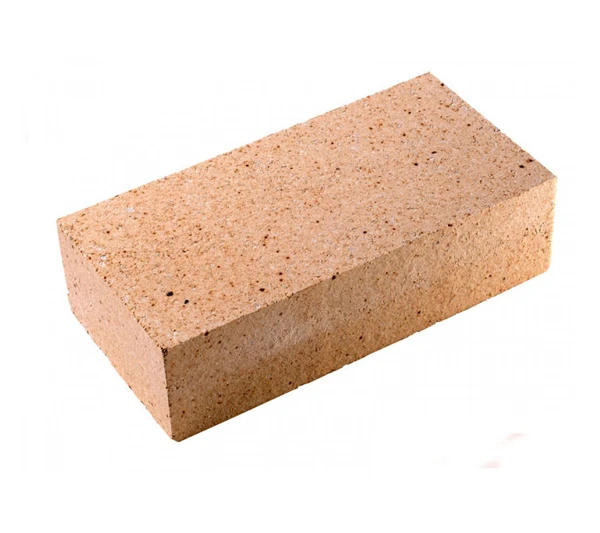
Light weight clay fire brick features excellent thermal insulation properties. The operating temperature can reach up to 1350℃. It is characterized by its low cost, low density, and low thermal conductivity. This brick is widely used in thermal equipment.
Specific Parameters of Light Weight Clay Fire Brick
| Item/Grade | NG135-1.3 | NG135-1.2 | NG130-1.0 | NG125-0.8 | NG120-0.6 |
|---|---|---|---|---|---|
| Bulk Density, g/cm³ | ≥1.3 | ≥1.2 | ≥1 | ≥0.8 | ≥0.6 |
| Cold Crushing Strength, MPa | ≤5 | ≤4.5 | ≤3.5 | ≤2.5 | ≤1.3 |
| Permanent Linear Change, % Experimental Conditions |
1350℃*12h | 1300℃*12h | 1250℃*12h | 1200℃*12h | |
| 02~1 | |||||
| Thermal Conductivity Coefficient, W/(m·K) Average Temperature (350±25)℃ |
≤0.55 | ≤0.5 | ≤0.4 | ≤0.35 | ≤0.25 |
Introduction of Light Weight Clay Bricks
Light weight clay bricks are insulating refractory brick made from a mixture of clay and grog. These raw materials are fired at high temperatures of 1200-1400°C. Refractory utilizes high-quality raw materials and advanced production processes to manufacture these bricks. Their alumina content is approximately 30-46%. They exhibit exceptional performance. So, they are a preferred choice for numerous high-temperature industry partners.
Characteristic Features of Insulated Clay Bricks
Low thermal conductivity: Its thermal conductivity is between 0.23 and 0.65 W/(m·K). The thermal conductivity is much lower than that of ordinary bricks. This brick can prevent heat transfer.
High porosity: The porosity is between 40 and 70%. This enhances the insulation effect.
Strong thermal shock resistance: Its permanent linear change is between -2 and 1%. The clay insulation bricks will not crack under large temperature changes.
Good insulation effect: Due to its low thermal conductivity, high porosity, and other characteristics, this brick has a good insulation effect. It can effectively improve energy efficiency.
Low bulk density: Its density is between 0.5 and 1.5 g/cm³. Lightweight clay insulation bricks are lightweight. It can reduce the structural load of high-temperature buildings.